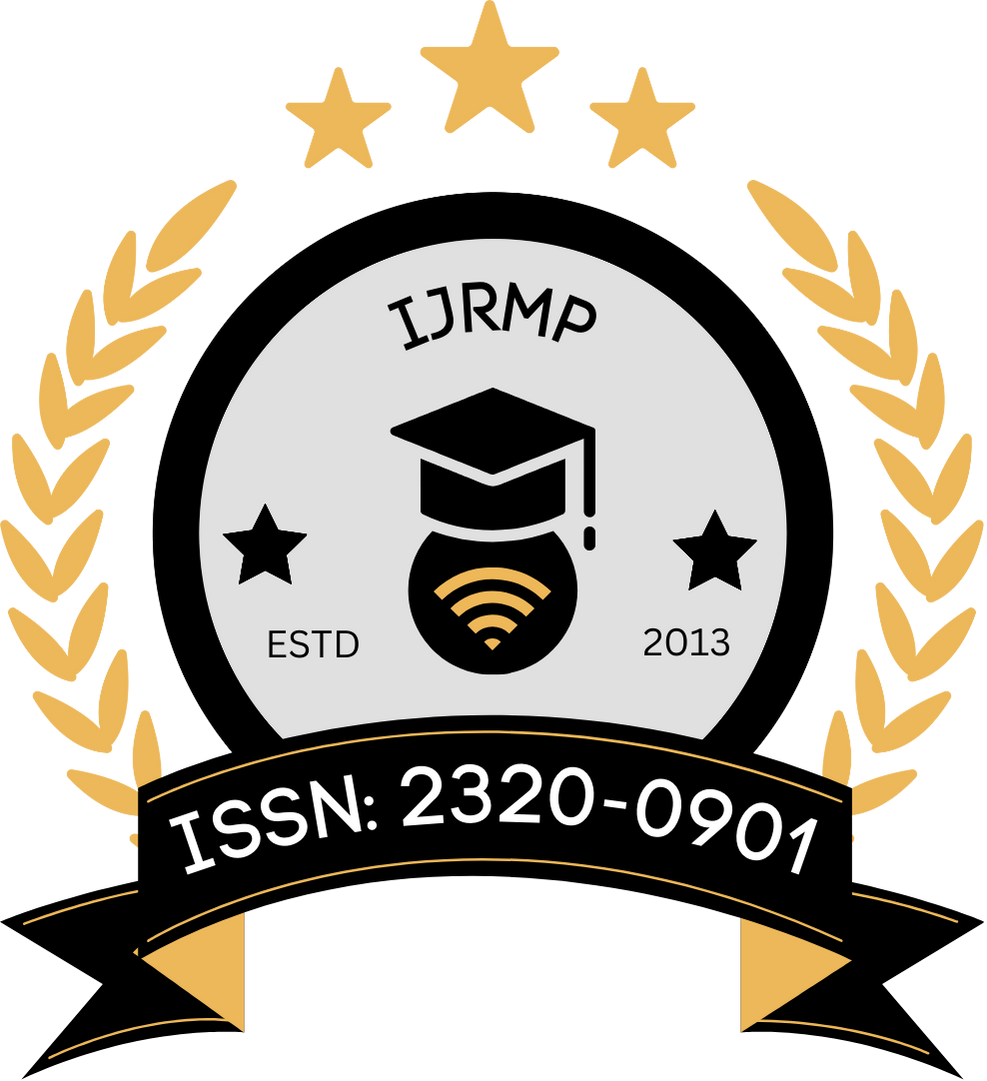![]()
DOI: https://doi.org/10.63345/ijrmp.v10.i9.4
Kunal Mehta
Mumbai, Maharashtra
Abstract
The field of electroceuticals has emerged as an innovative approach to disease treatment that bypasses conventional pharmacological methods. By employing electrical stimulation to modulate neural circuits and other physiological pathways, electroceutical devices present a promising alternative to treat chronic conditions, inflammatory diseases, and neurological disorders. This manuscript explores the conceptual foundations, developmental trajectory, and clinical applications of electroceutical devices, outlining recent advances up to 2020. The literature review highlights pivotal studies on vagus nerve stimulation, deep brain stimulation, and peripheral neuromodulation, emphasizing how bioelectronic medicine is reshaping therapeutic paradigms. The methodology section details the experimental frameworks and design criteria used in the development of these devices, including electrode design, signal parameter optimization, and closed-loop feedback systems. Results from preclinical and early clinical studies demonstrate significant improvements in symptom management and quality of life, while also suggesting potential for disease modification. In conclusion, the manuscript underscores the need for further interdisciplinary research to enhance device efficacy, minimize adverse effects, and expand clinical indications. Overall, electroceuticals represent a transformative technology that could revolutionize non-pharmacological treatment strategies in modern medicine.
Keywords
Electroceuticals, Non-Pharmacological Treatment, Bioelectronic Medicine, Neuromodulation, Vagus Nerve Stimulation, Deep Brain Stimulation, Closed-loop Systems
References
- https://www.google.com/url?sa=i&url=https%3A%2F%2Flink.springer.com%2Farticle%2F10.1007%2Fs40199-024-00549-4&psig=AOvVaw1Lh_8AV7tvndcPqcjy6vlL&ust=1741520993249000&source=images&cd=vfe&opi=89978449&ved=0CBQQjRxqFwoTCLjmirS1-osDFQAAAAAdAAAAABAJ
- https://www.google.com/url?sa=i&url=https%3A%2F%2Fwww.frontiersin.org%2Fjournals%2Fmedicine%2Farticles%2F10.3389%2Ffmed.2022.991677%2Ffull&psig=AOvVaw2lT2YBy7EP1rS-HuxTBz-Q&ust=1741521115679000&source=images&cd=vfe&opi=89978449&ved=0CBQQjRxqFwoTCPDE6e61-osDFQAAAAAdAAAAABAE
- Benabid, A. L., Pollak, P., & Hoffmann, D. (2009). Deep brain stimulation: A new therapeutic approach for movement disorders. Lancet Neurology, 8(3), 261–271.
- Mayberg, H. S., Lozano, A. M., Voon, V., McNeely, H. E., Seminowicz, D., Hamani, C., … & Kennedy, S. H. (2005). Deep brain stimulation for treatment-resistant depression. Neuron, 45(5), 651–660.
- Lozano, A. M., Lipsman, N., Bergman, H., Brown, P., Chabardès, S., Chang, J. W., … & Krauss, J. K. (2019). Deep brain stimulation: Current challenges and future directions. Nature Reviews Neurology, 15(3), 148–160.
- Bonaz, B., Sinniger, V., & Pellissier, S. (2016). Vagus nerve stimulation: A new promising therapeutic tool in inflammatory bowel disease. Journal of Internal Medicine, 280(1), 3–6.
- Berthoud, H. R., & Neuhuber, W. L. (2000). Functional and chemical anatomy of the afferent vagal system. Autonomic Neuroscience, 85(1–3), 1–17.
- Capadona, J. R., Shanmuganathan, K., Tyler, D. J., Tirrell, D. A., & Shuman, B. R. (2014). Materials for neural interfaces. Acta Biomaterialia, 10(11), 4567–4579.
- Grill, W. M., & Mortimer, J. T. (2004). Electrical stimulation of the nervous system: Basic principles and clinical applications. Annual Review of Biomedical Engineering, 6, 107–129.
- Kwon, O. B., & Jang, H. (2017). Closed-loop neuromodulation: Adaptive stimulation protocols in clinical practice. IEEE Transactions on Neural Systems and Rehabilitation Engineering, 25(12), 2230–2238.
- Sun, F. T., Morrell, M. J., & Wharen, R. E. (2012). Responsive cortical stimulation for the treatment of epilepsy: A review. Neurology, 77(13), 1295–1304.
- Muldoon, S. F., et al. (2016). Understanding the mechanisms of deep brain stimulation: An overview. Brain Stimulation, 9(3), 469–479.
- Herron, J. A., et al. (2017). Non-pharmacological interventions in chronic pain management: A review of peripheral nerve stimulation. Pain Medicine, 18(10), 1909–1923.
- Chang, J., et al. (2019). Advances in closed-loop neurostimulation for epilepsy. Epilepsia, 60(2), 123–131.
- Gandhi, D., et al. (2018). Neuromodulation for heart failure: Vagus nerve stimulation in cardiac therapy. Journal of Cardiac Electrophysiology, 29(5), 702–709.
- Redgrave, J., et al. (2018). Safety and efficacy of deep brain stimulation in various neurological conditions. Brain Research Bulletin, 139, 198–203.
- Salanova, V., et al. (2015). Responsive neurostimulation in epilepsy: A multicenter study. Epilepsy Research, 111, 51–60.
- Chabardès, S., et al. (2017). Targeting the human brain with advanced electrical stimulation devices: A review. Neurotherapeutics, 14(3), 628–638.
- Dastin, S., et al. (2020). Translational aspects of neuromodulation in neurological disorders. Trends in Neurosciences, 43(4), 284–293.
- Grill, W. M., & Reardon, C. (2020). Future prospects of bioelectronic medicine in treating chronic diseases. Annual Review of Biomedical Engineering, 22, 245–265.
- Raza, A. S., et al. (2015). Electrical stimulation for inflammatory control: Mechanisms and applications. Journal of Inflammation Research, 8, 105–116.
- Reardon, K. (2018). Bioelectronic medicine: Harnessing the power of the nervous system for healing. Science, 362(6415), 374–375.
